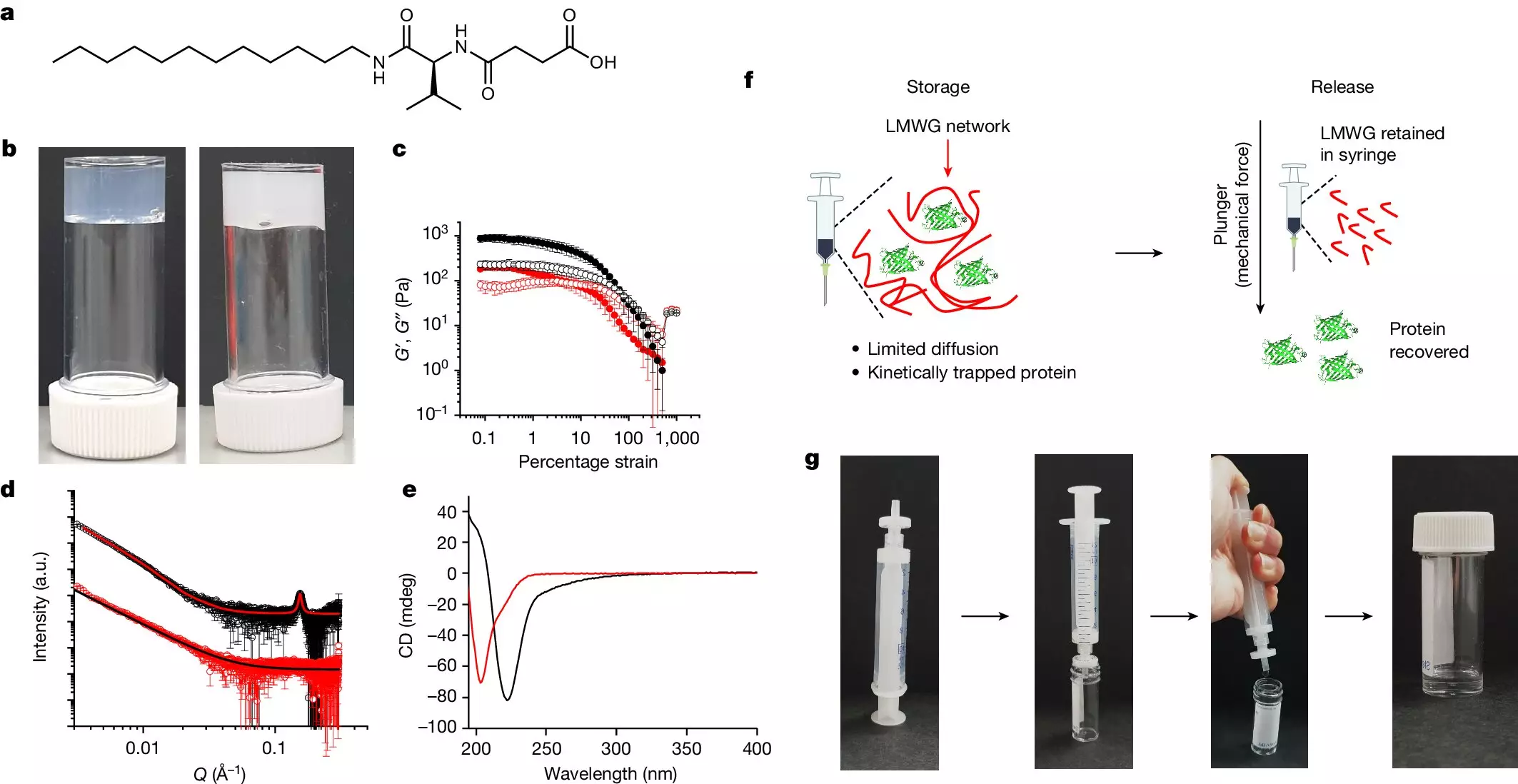In the world of biomedicine, protein therapeutics have emerged as invaluable tools in the treatment of a plethora of ailments—from serious diseases like cancer and diabetes to the increasingly prevalent obesity epidemic. Until now, the logistics of storing and transporting these life-saving substances posed significant challenges, particularly in areas without reliable electricity or refrigeration. However, researchers from the Universities of Manchester, Glasgow, and Warwick have embarked on a pioneering journey that could forever alter the landscape of protein therapeutics, presenting a new hydrogel technology capable of stabilizing proteins without the requirement for cold storage.
Hydrogel Innovations: A New Era of Distribution
This new hydrogel—predominantly composed of water—exceeds the conventional limitations set for the storage of delicate protein-based drugs. The research, published in the prestigious journal Nature, addresses the pressing problem of ensuring drug stability by allowing these proteins to withstand environments up to 50°C. This breakthrough stands to revolutionize healthcare delivery in developing regions, where maintaining cold chain logistics can be prohibitively expensive and logistically complex.
The hydrogel technology embraces a low molecular weight gelator (LMWG) that creates a robust three-dimensional network. This structure effectively encapsulates the proteins, preventing their aggregation and degradation. Unlike traditional storage methods that often rely on a constant cool environment, this hydrogel offers an economical and energy-efficient alternative, crucial for healthcare systems in countries with inadequate infrastructure.
The Impact on Global Health
The implications of this innovation extend far beyond mere storage; they promote a more equitable distribution of healthcare. In developing countries, the scarcity of refrigerators means that vital medicines, including insulin and various enzymes, are often rendered ineffective before they reach patients. The capacity to send these biologics through standard postal services highlights a monumental shift in accessibility. This advance means healthcare providers can focus on mitigating health crises rather than grappling with logistical hurdles.
Professor Matthew Gibson, one of the leading researchers, emphasizes the significance of this breakthrough: “Our technology allows us to store proteins at room temperature, eliminating the need for additives.” This aspect is particularly critical, as the safety of excipients can often restrict options for drug formulations, complicating the manufacturing and distribution processes.
A Deeper Look into the Hydrogel Mechanism
The hydrogel’s unique construction is a technical marvel. The network of stiff yet brittle fibers within the gel is essential for maintaining the integrity of the proteins. The careful balance of mechanical properties ensures that proteins can be released in a pure form when needed. By integrating a syringe fitted with a special filter, healthcare practitioners can administer the proteins directly and efficiently.
In rigorous testing, the hydrogel performed exceptionally well. Samples of insulin subjected to stress tests—including exposure to elevated temperatures and vigorous rotation—showed a remarkable capacity to retain efficacy. The enzyme beta-galactosidase, stored under extreme heat conditions, maintained 97% of its activity after a week, far surpassing previous limits established by conventional methods.
Challenges and Future Directions
Despite the promising nature of this innovation, we must remain critical of potential barriers that could hinder its widespread adoption. Manufacturing processes need to be established to scale this technology reliably and affordably. Furthermore, regulatory challenges may arise as the hydrogel transitions from lab to market. Scientists must demonstrate not only the functionality of proteins stored within the hydrogel but also ensure that the materials used are safe for human consumption.
The researchers are optimistic about these hurdles, as they are already exploring commercial opportunities for this patent-pending hydrogel technology. The prospects for biotechnology, diagnostics, and therapeutic applications are expansive, suggesting that the future is bright for healthcare advancements fueled by this innovative approach.
The advent of this new hydrogel technology has the potential to dismantle existing barriers to accessing protein-based therapeutics. Its implications for healthcare delivery, especially in underserved regions, are profound. By promoting stability and accessibility, this breakthrough could transform not just the logistics of drug distribution, but ultimately improve health outcomes on a global scale—making it an iconic moment in the story of medical science.


Leave a Reply